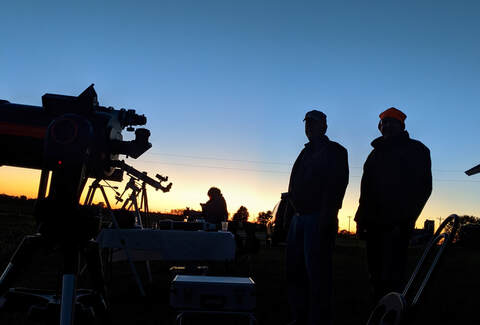Current Sky Conditions
Seasonal Mini Messier Marathon Observing Log Sheets
Club Observing Sites
| |||||||||||||||||||||||||
Observing Etiquette
Please be aware of a few obvious and not so obvious “rules” of etiquette around the telescopes.
- Never touch the equipment unless instructed by the owner.
- NEVER wipe any optical surfaces with fingers, cloths, etc. as the coatings on them are extremely delicate and can be ruined very easily. If an eyepiece or lens in a telescope fogs up due to high humidity, inform the telescope owner.
- When approaching an observing site after dark, please dim your headlights and use only parking lights to approach the group. In the case of vehicles with automatic headlights that cannot be turned off, please be sure you do not blind everyone when approaching. It takes up to twenty minutes for eyes to become dark-adapted, and only a split second to close the pupils back up.
- If you approach the observing site with a flashlight, be sure to point it at the ground and not the observers. Red lights are preferred. You can find red "tail-light tape" at an automotive store to tape over a regular flashlight.
What to bring
Be sure to dress for the occasion! It is a general rule of thumb that you dress for thirty degrees colder than the actual temperature when observing at night. Movement is minimal, and feet especially can get very uncomfortable. Hypothermia is also a very real threat and needs to be avoided.
If you have a telescope or binoculars, feel free to bring it along! We would be happy to help you learn to use them at night if you don't already do so. Many people have binoculars and have never turned them to the night sky!

